During the opening week of The Super Mario Bros. Movie, we watched it to create a list of Easter eggs and references. However, the film is chock-full of these hidden gems, making an exhaustive list almost indistinguishable from a full breakdown of the movie itself. The movie’s plot is quite simplistic. The characters barely evolve, and the story is essentially a series of action-packed scenes, with the enjoyment factor directly tied to the viewer’s prior knowledge of the characters and their ability to identify numerous nods to Nintendo’s history.
In other words, the movie’s narrative is akin to a 2D Mario platformer. While critics have lamented the lack of depth and characterization, it is essential to remember that the brilliance of the Mario franchise has always been its gameplay, not its plot. When the gameplay is removed, an entertaining collection of Easter eggs remains, precisely what the movie aimed to deliver. Here are 15 of the best ones we spotted.
A Flawed Father Figure
Kamek, Bowser’s Flawed Father Figure Kamek, the Magikoopa who serves as Bowser’s right-hand man, has a significant presence in the games. He has raised Bowser since he was a baby and is Yoshi’s arch-nemesis.
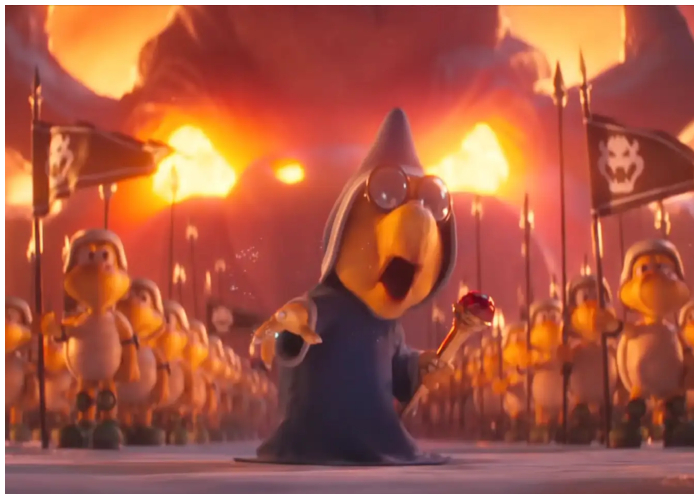
In the movie, we see Bowser practicing his charm with Kamek disguised as Princess Peach, referencing the bait-and-switch scene from the New Super Mario Bros. series.
It’s-a Me!
Charles Martinet, the iconic voice behind Mario since Super Mario 64, makes a heartwarming cameo as Mario’s father in the movie. Chris Pratt takes the lead role as Mario. Still, Martinet’s appearance pays tribute to his long-standing involvement with the character and his importance in Mario’s evolution over the years.

In addition, the movie reveals that Mario’s parents are based on previously unused designs created by Nintendo, showcasing the depth and richness of the character’s backstory and connecting it with the company’s history.
Punch-Out!! Pizzeria
The Punch-Out!! Pizzeria serves as a delightful homage to the classic NES game, bringing its memorable characters to life within the movie’s universe. The pizzeria’s walls are adorned with photos of Little Mac’s renowned opponents, such as the formidable Bear Hugger, the powerful Mr. Sandman, and the notorious Glass Joe.
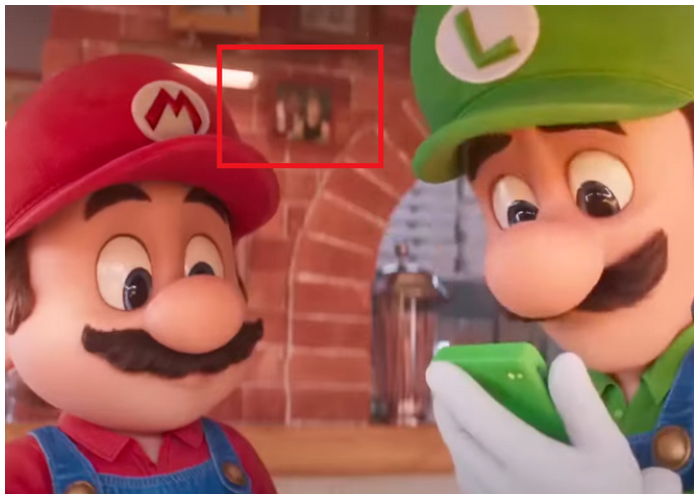
This subtle tribute highlights the interconnected nature of Nintendo’s various franchises, creating a sense of nostalgia for fans and reminding them of the iconic games that shaped their childhoods.
Spike The Foreman
In the movie, Spike, Mario and Luigi’s ex-boss, re-emerges to taunt the brothers for starting their own business. As a character who initially appeared as an antagonist in the NES game Wrecking Crew, Spike’s presence serves as a callback to Mario’s early history within the Nintendo universe.

In Wrecking Crew, Mario was depicted as a carpenter, showcasing a different side of the character before he became known as a plumber. By including Spike in the film, the creators pay homage to Mario’s origins and celebrate the character’s growth and development throughout the years.
Jump Man
Jump Man, the Meta Reference The movie features an exciting twist where Nintendo exists in its universe but without Mario as its mascot.

Various Nintendo game references are scattered throughout the film, with the most meta one being the Donkey Kong arcade game renamed Jump Man, which was Mario’s original name before Nintendo established the canon.
1-1 Homage
At the movie’s start, Mario and Luigi find themselves on a construction site, cleverly designed to resemble the iconic level 1-1 from Super Mario Bros. (1985). The scene is filled with subtle details, such as the house number and paint buckets, emulating the Question Mark Blocks from the original game.
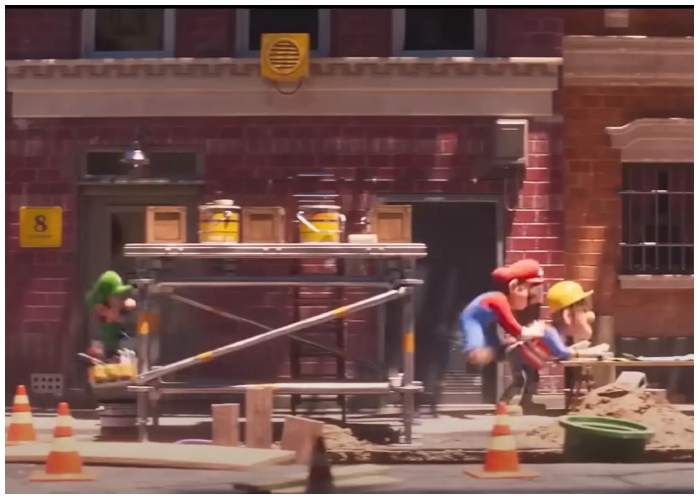
The sequence concludes with a nostalgic nod to the flagpole moment in the game, as Mario slides down a metal signpost reminiscent of completing a level in the classic platformer.
Mayor Pauline
Pauline, originally the damsel in distress from Donkey Kong, appears as New York City’s mayor during a news segment about the city’s flooding. In Super Mario Odyssey, Pauline plays a similar role as the mayor of New Donk City, a location heavily influenced by midtown Manhattan.
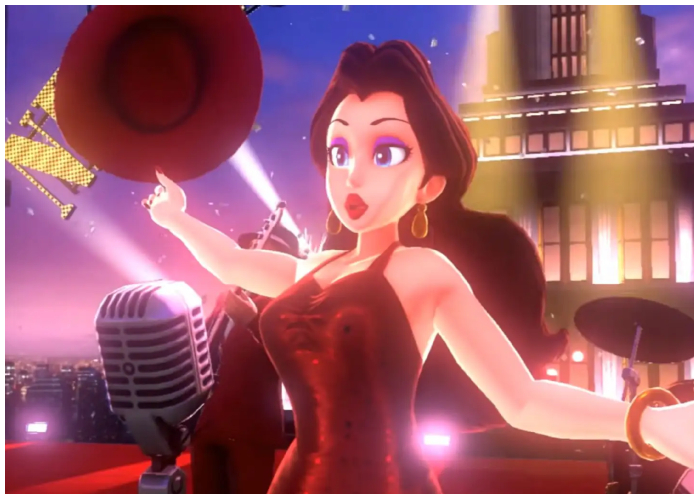
This cameo sparks debate among fans regarding the possibility of Mario having witnessed the events of 9/11, given that the film is set in New York City rather than the fictional New Donk City.
Going Underground
When Mario and Luigi venture underground for the first time, viewers are treated to Koji Kondo’s iconic underground theme from the Super Mario Bros. series.
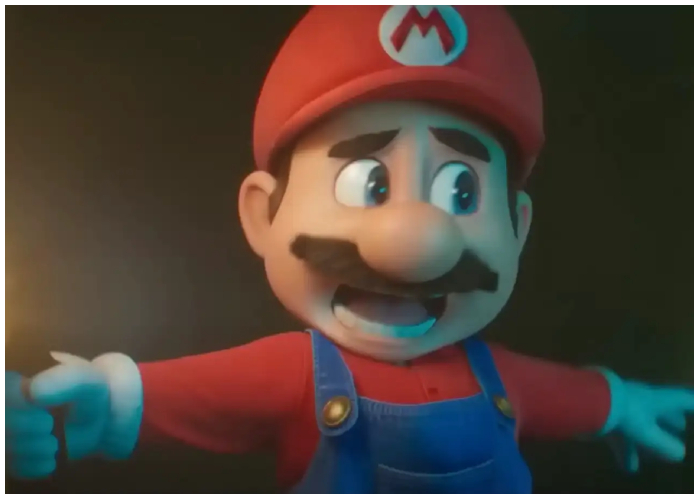
As the brothers descend, a sign displaying “Level 1-2” can be seen, harkening back to the first time players encountered the memorable tune in Super Mario Bros. (1985). This nostalgic reference creates a strong connection between the movie and the beloved games.
DK Rap
The Super Mario Bros. Movie includes two rap songs that pay homage to the franchise’s past. The beat for “Plumber Rap” comes from the live-action Super Mario Brothers Super Show (1989), while “DK Rap” originates from Donkey Kong 64.
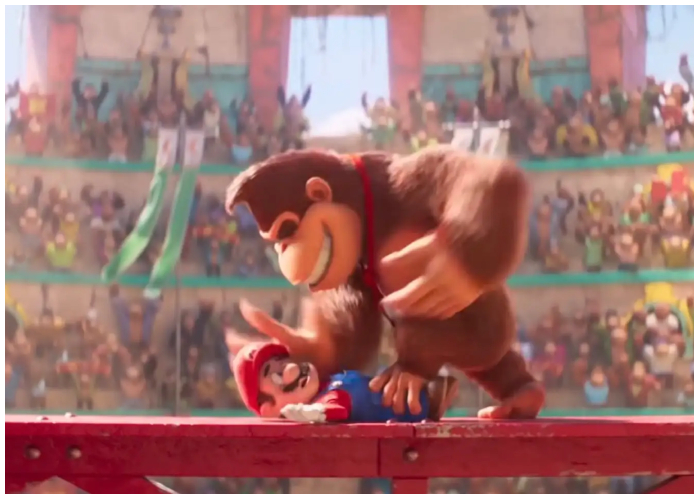
Composer Grant Kirkhope has expressed disappointment that he was not credited for contributing to the latter song in the film’s end credits.
Koopalings?
In one scene, Bowser plays the piano adorned with Ludwig von Koopa’s name, a subtle reference to the Koopalings’ musical inspirations. The Koopalings, portrayed initially as Bowser’s children, were later reimagined as his underlings.
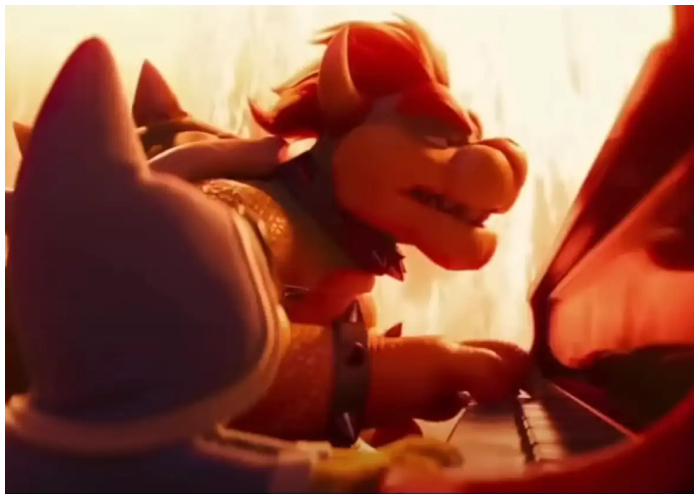
Each Koopaling’s name is derived from a famous musician, such as Ludwig von Koopa’s allusion to Ludwig van Beethoven, Lemmy Koopa’s nod to Lemmy Kilmister of Motorhead, and Roy Koopa’s tribute to Roy Orbison.
Rainbow Road Shortcut
The movie’s Mario Kart sequence contains references for fans to enjoy, from drifting around corners to the chaos of Blue Shell attacks. The most exciting callback occurs when Mario takes a well-known shortcut on Rainbow Road, a fan-favorite course from Mario Kart 64.
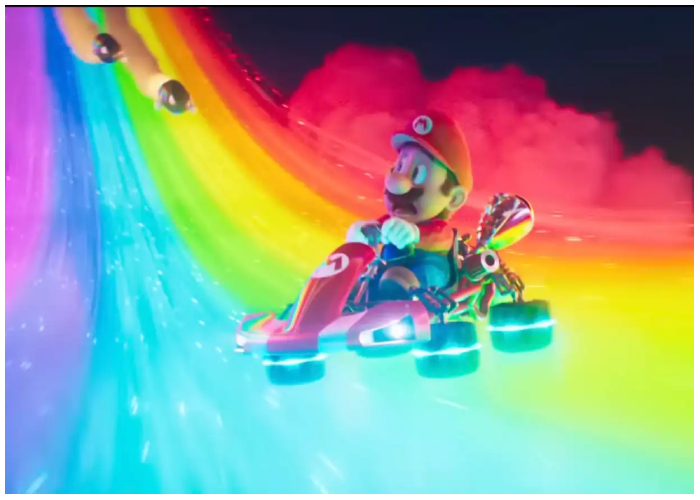
This thrilling moment demonstrates the filmmakers’ commitment to including intricate details from the games.
A Huge Wedding Cake
A massive wedding cake showcased at Bowser’s planned wedding resembles the cake featured in the Super Mario Adventures comic, written by Kentaro Takekuma and illustrated by Charlie Nozawa.
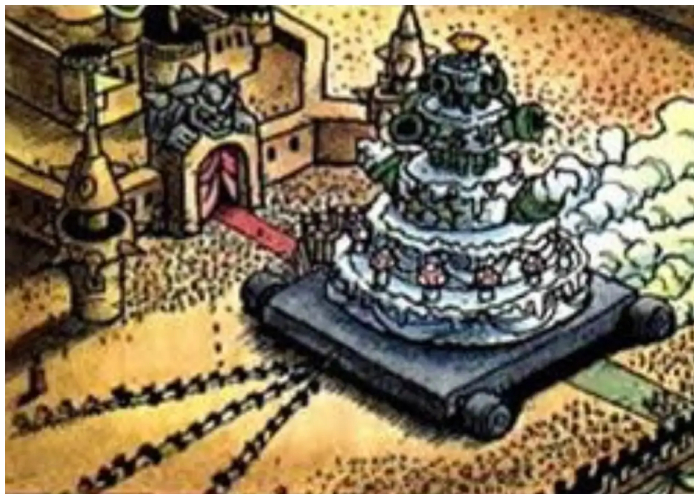
The comic, serialized in Nintendo Power magazine for ten months, was published in conjunction with the release of Super Mario World. The wedding cake plays a significant role in the comic, serving as the setting for Bowser and Mario’s climactic showdown.
Wedding Guests
Among the various minions attending Bowser’s wedding, several notable characters stand out, including King Bob-omb, the first boss in Super Mario 64; King Boo, the primary antagonist in the Luigi’s Mansion spin-off franchise; and Petey Piranha, a formidable boss from Super Mario Sunshine.

These familiar faces serve as a delightful treat for long-time fans of the franchise, reminding them of memorable moments from past games.
Disk-Kun Hardware Store
Throughout the film, a keen eye will spot various storefronts referencing classic Nintendo games. One restaurant, Chasse au Canard, features an 8-bit duck logo, a nod to the beloved Duck Hunt game that utilized the NES Zapper to shoot at the TV screen. Duck Hunt was even packaged with Super Mario Bros. on a single cartridge for a time.

Another subtle reference appears in the Disk-Kun Hardware Store, an allusion to the Japanese mascot Diskun who represented Nintendo’s Famicom Disk System. This console used floppy disks instead of cartridges and was only released in Japan.
Yoshi Tease
The movie’s end credits reveal a green-spotted Yoshi egg beginning to hatch, reminiscent of the 1998 Godzilla movie’s ending, which showed a Godzilla egg hatching. Although a group of Yoshis appears earlier in the film, they are not the iconic green Yoshi that fans know and love.
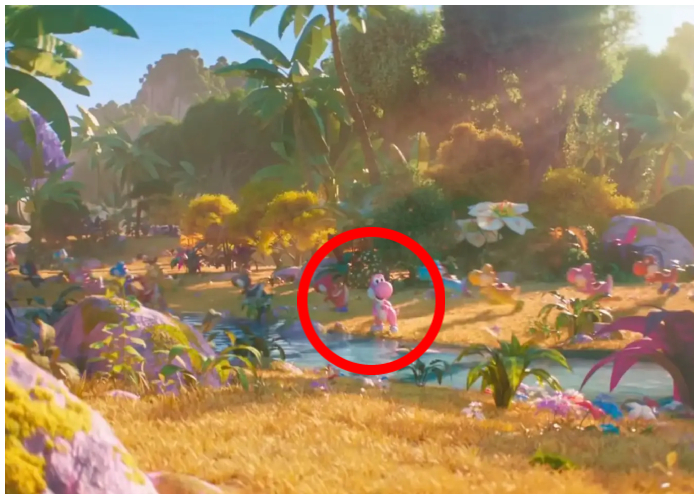
This cliffhanger suggests that Illumination might plan a sequel, potentially featuring Yoshi as a central character. However, the confirmation of a follow-up film will likely depend on the box office success of The Super Mario Bros. Movie.
Luigi’s Ringtone
As Luigi receives a call regarding his and Mario’s inaugural plumbing assignment, Nintendo enthusiasts will instantly identify his ringtone as the iconic GameCube start-up melody. This brief yet unforgettable tune would greet players each time they turned on their consoles.

The nod is particularly appropriate, given that Luigi’s initial standalone adventure, Luigi’s Mansion, was among the GameCube’s launch titles in 2001. The original GameCube theme, composed by Toru Minegishi, is just one of the numerous Mario-inspired tunes featured in the film.
Nintendo Owns Brooklyn
The Super Mario Bros. Movie is filled with Easter eggs and references to Nintendo’s video games. Mario and Luigi work at a construction company led by Spike, a Wrecking Crew game franchise villain. The movie references games such as Punch-Out!!, Donkey Kong, Super Mario World, Duck Hunt, Star Fox, F-Zero, and Kid Icarus.
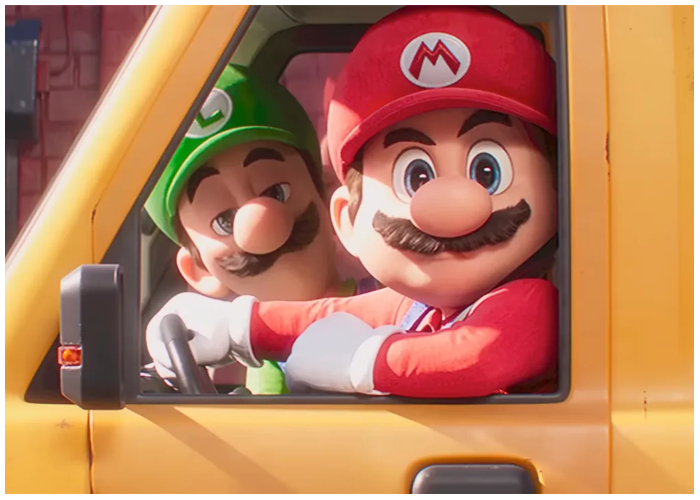
There are references to real-life locations such as Castle Burger and Mayor Pauline. Mario and Luigi’s home is filled with references, including a model of the Star Fox battleship and a Falcon poster. The first client’s house is filled with references, such as a painting of the dog from Duck Hunt and a glass statue of a Pikmin.
Secrets in the Mushroom Kingdom
The movie references various games in the Mushroom Kingdom, such as Super Mario Bros., Super Mario 64, Super Mario Bros. 3, Super Mario 3D Land, and Super Mario Odyssey. The Mushroom Kingdom features locations such as Crazy Cap Store and an antique shop with items from previous games.
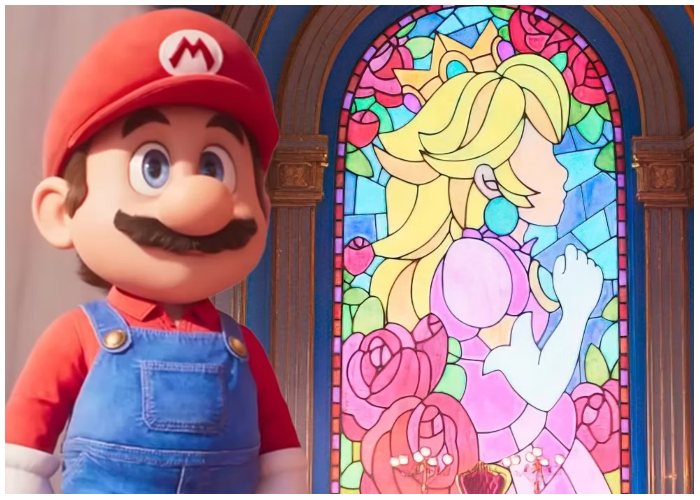
Inside Peach’s castle, the movie references Super Mario 64 with paintings representing levels and a map of classic franchise locations. The training montage introduces the Super Shroom power-up. When the characters travel to Kong Island, they pass through Yoshi’s Island and the “Sand Kingdom,” where Peach demonstrates the powers of the Fire Flower power-up.
Luigi’s Mansion, Bowser’s Floating Island, and Baby Mario
When Luigi wakes up in the dark lands, the theme of Luigi’s Mansion plays in the background, referencing the beloved horror spin-off. Luigi also fumbles with a faulty flashlight, another nod to the franchise. Baby Mario and Baby Luigi appear wearing their iconic hats, reminiscent of their debut in 1995’s Super Mario World 2: Yoshi’s Island.

Bowser’s floating fortress originates from 2000’s Paper Mario. A Lumen from Super Mario Galaxy appears in the island’s prison, and Bowser’s piano, engraved with Ludwig von Koopa’s name, plays Super Mario Bros.’ “World 1-2.”
Kong Island Characters and Power-Ups
Kong Island’s arena showcases various characters and power-ups from the Donkey Kong and Super Mario franchises. The “DK Rap” from Donkey Kong 64 plays as Donkey Kong (voiced by Seth Rogen) enters. Diddy Kong, Dixie Kong, Swanky Kong, Chunky Kong, Funky Kong, and Kiddy Kong are all featured.
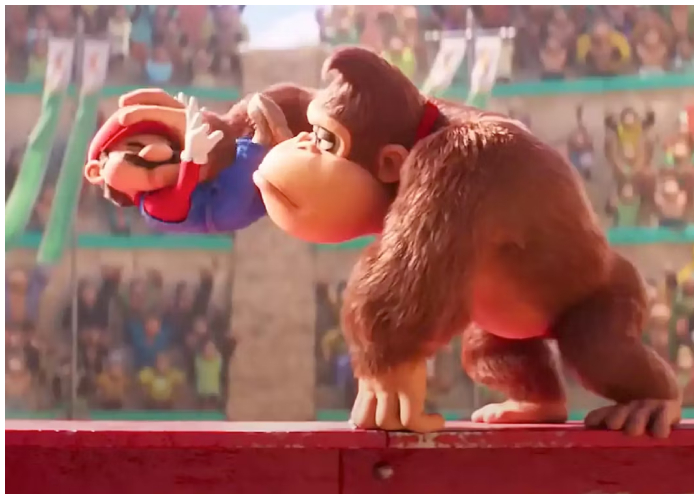
Mario uses a Mini Mushroom from Mario Party 4 and a Cat Suit from Super Mario 3D World during the fight. At the same time, Cranky Kong’s cabin resembles his home in Donkey Kong Country.
Mario Kart References
The kart-building sequence mirrors Mario Kart 8’s selection screen. Several features from other Mario Kart games appear, such as antigravity wheels and gliders.
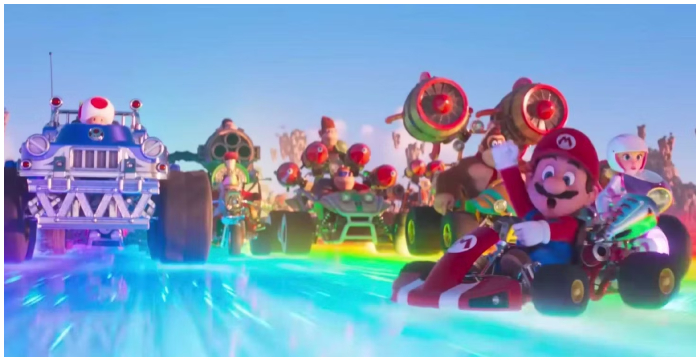
The chase occurs on Rainbow Road, a classic Mario Kart level. It incorporates Bananas, Green Shells, Bullet Bills, and Blue Shells. Clown Copters from Super Mario World appear, and a Maw-Ray from Super Mario 64 swallows Mario and Donkey Kong.
The Wedding and Final Battle
Bowser dons a white top hat from Super Mario Odyssey for his wedding, attended by King Boo and King Bomb-Omb. Peach uses an Ice Flower from the Super Mario-kun manga series, and Mario uses a Tanooki Suit from Super Mario Bros. 3.
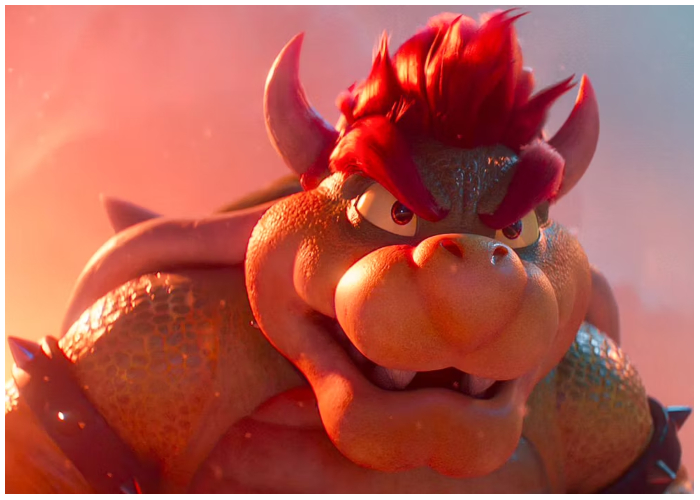
The Invincibility Star empowers Mario and Luigi to battle Bowser’s army in Brooklyn. Bowser’s defeat comes from a move popularized in Super Mario 64—grabbing his tail, spinning him, and throwing him away.
Classic Baddies
The Super Mario Bros. Movie opens with Bowser’s forces attacking the Ice Kingdom of the Penguins. Bowser’s vast army features classic Mario enemies, such as Koopa Troopas, Dry Bones, Hammer Bros., Goomba stacks, leaping Cheep Cheeps, subaquatic Bloopers, and Bob-ombs.
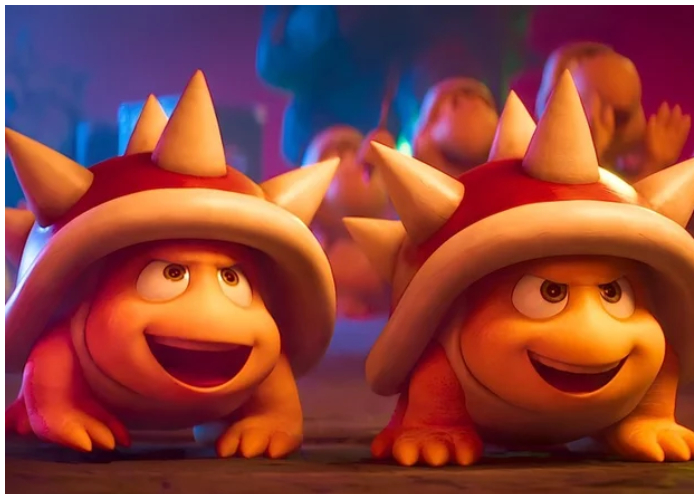
Kamek, the Magikoopa, leads the army as Bowser’s second-in-command. So many familiar foes demonstrate the movie’s commitment to authenticity. It pays homage to the Mario games’ rich history.
Treasures in Mario’s Bedroom
Mario’s bedroom is filled with Nintendo Easter eggs, such as an NES console hooked up to his TV, where he plays “Kid Icarus.” Other references include a model Arwing from the “Star Fox” series atop the TV and various posters referencing “F-Zero,” “Ice Climber,” “Kung Fu,” and “Spyhunter.”

As the most famous Nintendo character, Mario’s room should be a treasure trove of references to the company’s other games. This attention to detail adds depth to the movie and is a treat for fans of Nintendo’s vast gaming universe.
Quitting the Wrecking Crew
“The Super Mario Bros. Movie” features an intriguing Easter egg from Spike, Mario and Luigi’s ex-boss, who sports a hat with the text “Wrecking Crew.” This is an ingenious reference to the 1984 arcade game “Wrecking Crew,” where Mario and Luigi tackle construction site levels filled with action.
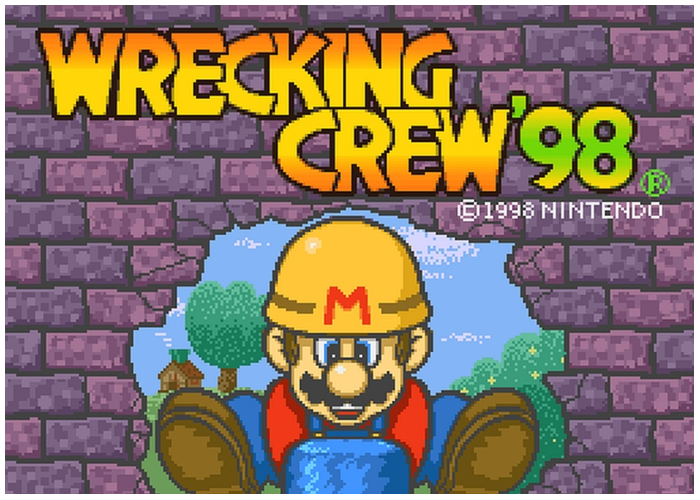
Spike’s resentment towards Mario and Luigi for leaving his company and starting their own plumbing business alludes to the shift in popularity from “Wrecking Crew” to the now-iconic “Mario” games. Interestingly, Spike’s blue attire resembles Fix-It Felix from “Wreck-It Ralph,” another character designed to evoke a sense of nostalgia for Mario.
It’s-a Charles Martinet!
Although Chris Pratt voices Mario in “The Super Mario Bros. Movie,” Charles Martinet, the beloved voice of Mario, Luigi, Waluigi, and Wario in the games since the early 1990s, lends his talent to two supporting characters.
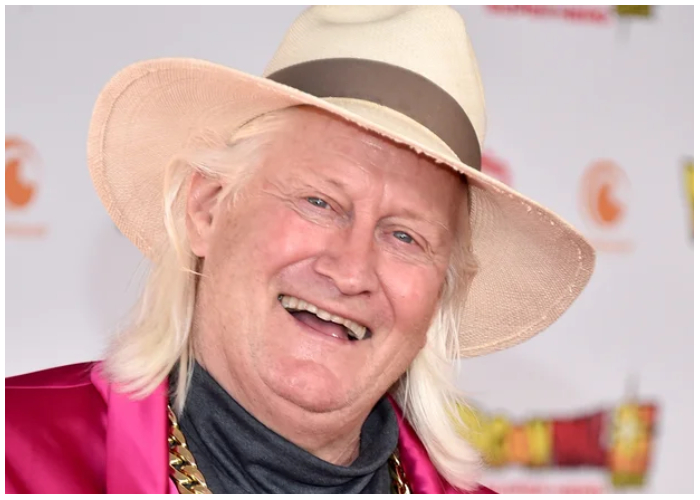
Martinet portrays Giuseppe, who plays “Jumpman” in a pizzeria, masterfully delivering classic Mario lines and sounds, including the iconic “Wahoo!” He also voices Mario and Luigi’s father, a fitting and clever casting choice. Martinet has been responsible for bringing these characters to life for decades, making him a significant part of their legacy.
The World Map
The world maps in the mainline “Super Mario” games are iconic, showcasing the diverse and visually captivating areas that Mario must explore. In the movie, two world maps appear – one composed of voxels in Peach’s throne room and a more traditional map in Donkey Kong’s house. Although the film doesn’t delve deeply into each area, several glimpses offer a visual treat for fans.

Mario, Peach, and Toad journey through the desert land with floating inverted pyramids, the foggy cliffs of a sky kingdom, a grassy world featuring a “Super Mario 64” cannon, and the colorful Yoshi’s Island teeming with Yoshis. These brief visits to different worlds pay homage to the games and their distinct level designs.
Not Every Toad is the Same
The movie features a variety of Toads, some more prominent than others, showcasing the diversity of these characters from the games. The main Toad, voiced by Keegan-Michael Key, carries the large backpack of Captain Toad, first introduced in the “Super Mario Galaxy” games. Captain Toad has since become a mainstay in the franchise, even starring in his standalone game.
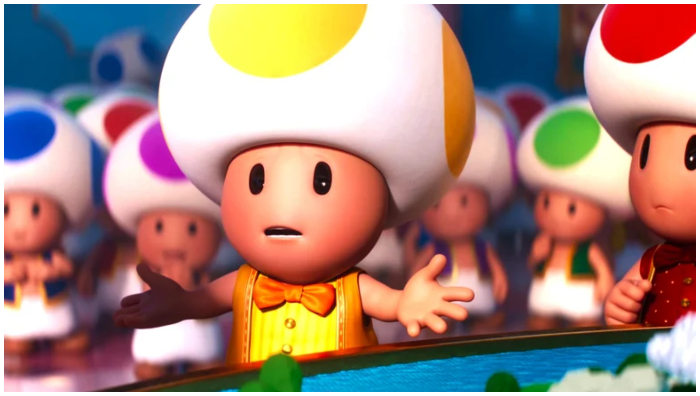
If a sequel to the movie is made, this Toad could be officially promoted to captain. Another interesting Toad is Peach’s bespectacled advisor, resembling Toadsworth, the elderly butler Toad, and Hint Toad from the modern games. While this advisor doesn’t possess Toadsworth’s brown spots, beard, or walking stick, he shares the general Toad shape and glasses. The movie character has a purplish-blue hue and appears younger, resembling Hint Toad more closely. Both characters likely served as inspiration for this unique Toad in the film.
The “Holy Make”
As Mario and Luigi daringly venture into the depths of the sewer, they come across a seemingly ordinary wall. But, as they break it apart, a stunning Easter egg is unveiled – the Holy Make, an 8-bit Mario head reminiscent of the classic video game era.
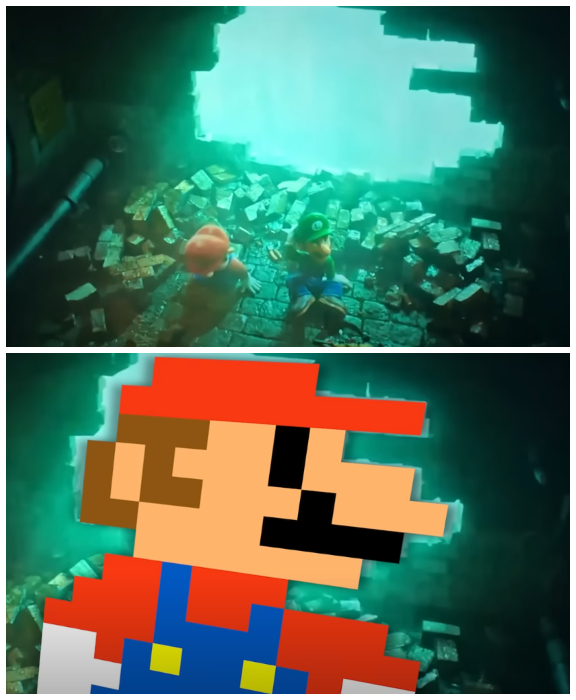
As if this wasn’t enough, they continue down the staircase to find a mysterious message etched on the wall: “Level 12.” This tantalizing clue sparks curiosity and wonders, inviting viewers to unravel its hidden meaning. Will you be the one to uncover the secrets behind “Level 12”? Join Mario and Luigi on this thrilling adventure and find out!
Geological Marvels
Throughout the visually captivating Super Mario Bros. Movie, fans are treated to a delightful array of familiar elements from the beloved game series. Among these nostalgic gems are the striking dome-like rock formations that make appearances in various scenes. These extraordinary geological wonders serve as a loving tribute to the iconic capsule-shaped hills that have adorned the background of numerous Mario games since the franchise’s inception.

With each rock formation uniquely shaped and carefully placed, they’ll undoubtedly evoke a sense of nostalgia and awe. Are you up for the challenge of spotting them all? Immerse yourself in the enchanting world of Super Mario Bros. and embark on a journey of discovery!
The Training Grounds Scene
Last but not least, feast your eyes on the exhilarating training grounds scene! The flag pole is a gleaming tribute to the original gold pole from New Super Mario Bros. As Peach achieves her goal, the unforgettable victory sound fills the air. Watch her gracefully float down, dress billowing like a parachute – a nod to Super Mario 3D World, where she first showcased this gravity-defying skill.
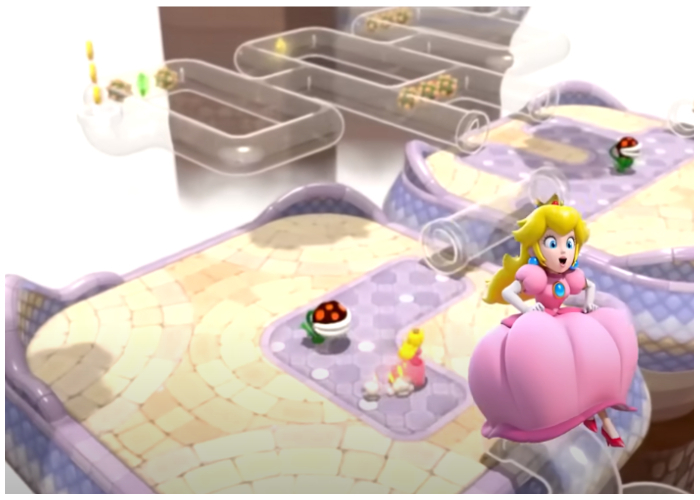
And don’t miss the striking lights around the starting platform, which resemble the super crowns from New Super Mario Bros. U Deluxe. How many more hidden gems can you uncover?
Bowser’s Elegant Wedding Attire
Typically portrayed as a menacing antagonist, Bowser reveals a softer side as he dreams of ruling the world with Princess Peach. Unfortunately, she rejects his advances, prompting him to kidnap her repeatedly. In Super Mario Odyssey, Bowser dons a chic wedding suit for their nuptials, an outfit he wears again in The Super Mario Bros. Movie.

The fashionable suit is an endearing Easter egg that pays tribute to Bowser’s modern escapades and enhances the numerous other classic Mario game references sprinkled throughout the film. This glimpse of Bowser’s sophisticated side adds depth to his character, making the movie even more engaging for franchise fans.
Masterful Drifting on Rainbow Road
Navigating the perilous Rainbow Road, Mario expertly drifts from side to side, tackling sharp turns and evading the fearsome Blue Shell attack. Mario’s tires emit an array of blue, yellow, and red sparks as he drifts, reminiscent of the fan-favorite Mario Kart series.
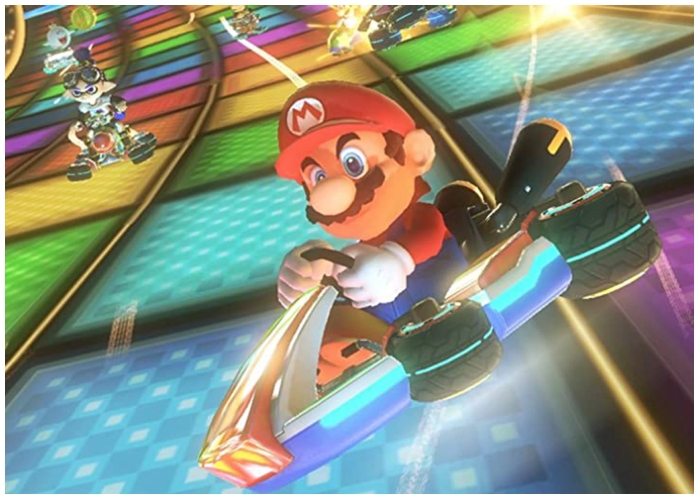
This exhilarating driving sequence showcases Mario’s exceptional skills and pays homage to the beloved racing games. The attention to detail in this scene highlights the filmmakers’ dedication to authentically representing the Mario Kart universe, making it an Easter egg that fans will undoubtedly appreciate.
Ice Climber Polar Bear: A Frosty Reference
The climactic Brooklyn battle scene is rich with subtle references, including an Ice Climber polar bear displayed on a sign for an establishment assumed to sell ice cream or ice. This cute character appears in a poster in Mario’s bedroom earlier in the film.
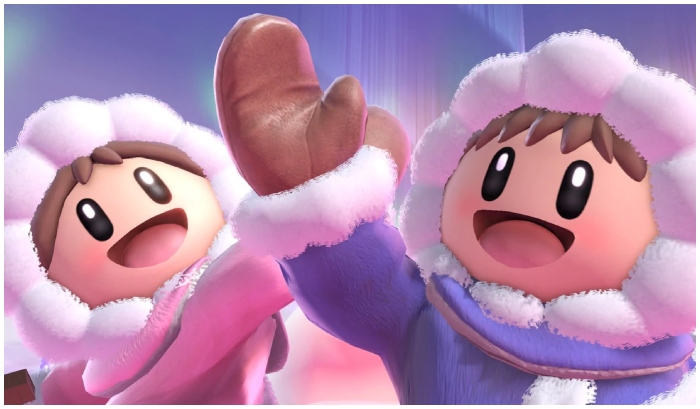
It’s a delightful, easily missed Easter egg that adds a touch of nostalgia and charm to the cityscape. Fans familiar with the Ice Climber series will enjoy uncovering this hidden gem and appreciate the filmmakers’ dedication to including references to various Nintendo titles.
Luck Cards: A Tribute to Nintendo’s Roots
In the movie’s dramatic conclusion, as the Brooklyn battle ends and the heroes focus on defeating Bowser, a poster advertising “Luck Cards” appears in the background. Hanafuda seems to be written on it, alluding to Nintendo’s humble beginnings as a card-making company.
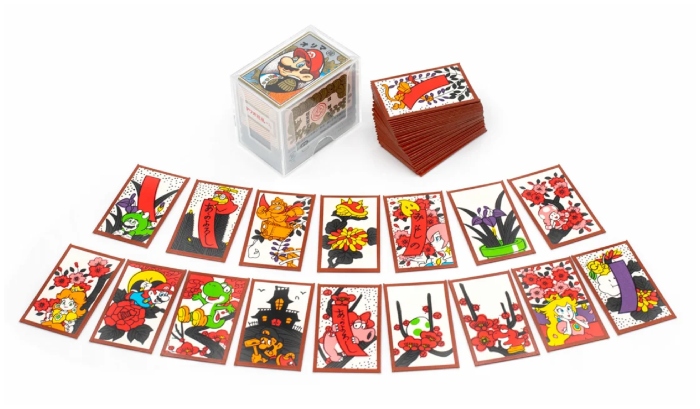
This Easter egg honors the company’s history and rewards attentive viewers with a hidden treasure. This reference showcases the filmmakers’ deep respect for Nintendo and adds another layer of depth to the movie.
NES Nostalgia and Arwing Toy
Mario plays the original Kid Icarus on a North American NES console in a clever, self-referential scene. Above his TV hangs a small Arwing figure from the Star Fox series, further immersing viewers in gaming nostalgia.
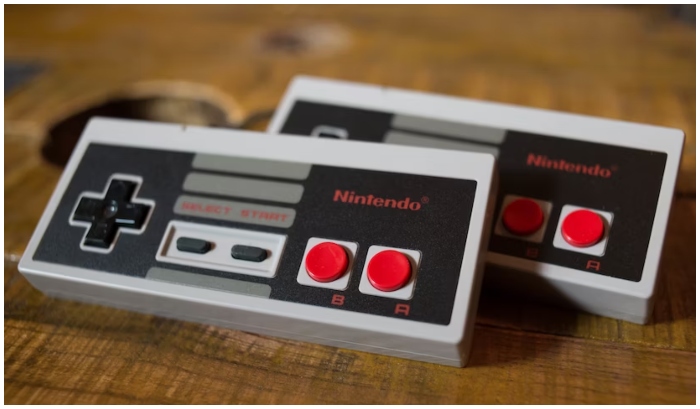
The Japanese version of the film may feature Mario playing a Famicom instead, making the scene even more culturally relevant. This Easter egg demonstrates the filmmakers’ commitment to recreating the authentic gaming atmosphere that fans love and cherish.
Super Smash Bros. Moves in Action
Throughout various fight and training sequences, Peach, Mario, and Donkey Kong perform familiar attack moves from the Super Smash Bros. games, paying homage to their respective movements.

The characters’ authentic moves delight fans of the iconic fighting series, showcasing the filmmakers’ dedication to accurately representing the franchise’s gameplay. This exciting inclusion highlights the action-packed nature of the movie and provides fans with a thrilling, nostalgic experience.
Blue Shell Koopa-Troopa Titan Terror
During an intense, Mad Max-style sequence on Rainbow Road, a Koopa General (voiced by Scott Menville) transforms into the infamous blue shell, causing chaos for Mario and Donkey Kong. Menville is renowned for voicing Robin in Teen Titans Go!, a show created by the movie’s directors, Aaron Horvath and Michael Jelenic.
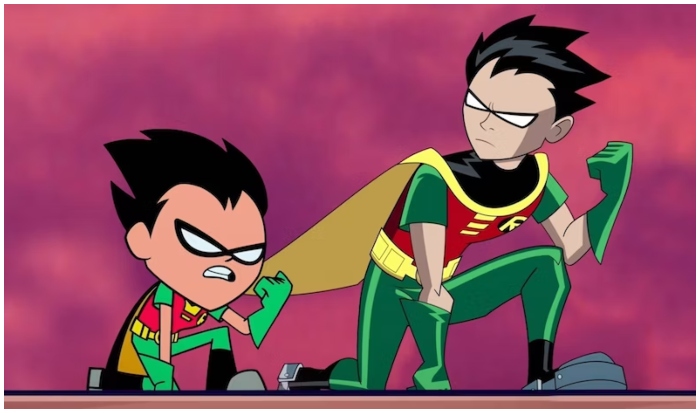
The blue shell’s destructive legacy from the Mario Kart games is brought to life in this gripping, family-friendly film. This Easter egg highlights Menville’s voice acting talents. It pays tribute to the blue shell’s infamous impact on the Mario Kart experience. The inclusion of this kamikaze Koopa adds a sense of urgency and excitement to the movie, making it a memorable moment for fans.
The Terrifying Maw-Ray Returns
After encountering the kamikaze, Koopa, Mario, and Donkey Kong plunge into the ocean, confronting the nightmarish Maw-Ray. This colossal eel has haunted Mario fans since its debut in Super Mario 64’s Jolly Roger Bay course. Its appearance in the film adds a thrilling touch of nostalgia.
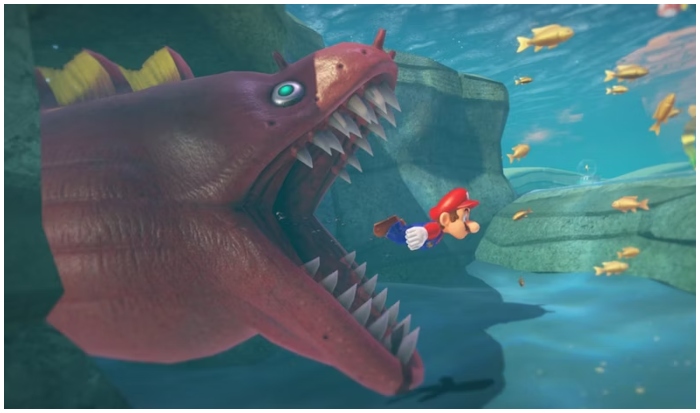
It demonstrates the filmmakers’ commitment to incorporating iconic elements from various Mario games. The Maw-Ray’s presence serves as a chilling reminder of Mario and his friends’ challenges, further immersing fans in the movie’s captivating narrative.
Balloon Fighter’s Soapy Debut
During the film’s climax, Mario returns to Brooklyn, landing at a construction site. In an establishing wide shot, a car wash sign features the Balloon Fighter from the 1984 NES game Balloon Fight as its mascot.

This clever Easter egg pays homage to a classic game and adds a touch of whimsy to the urban landscape. Fans of the retro title will appreciate this subtle nod to the past as they enjoy the exciting conclusion of The Super Mario Bros. Movie.
New Movie, Old Abilities
“The Super Mario Bros. Movie” highlights the classic abilities of its characters, ensuring a faithful adaptation of their in-game counterparts. Princess Peach displays her signature moves, such as wall-jumping, bouncing off Bullet Bills, and floating gracefully to slow her descent – a technique unique to her in the “Mario” games.
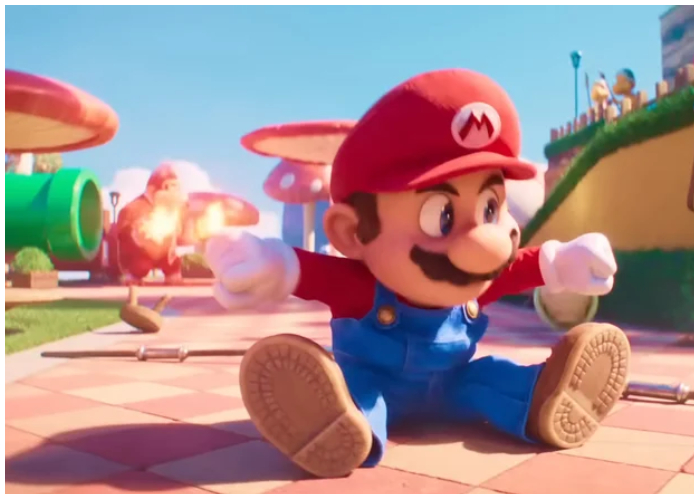
Mario demonstrates his prowess by executing a ground-pound (or butt stomp) and navigating platforming sequences reminiscent of the games, such as when he’s running to Bowser and Peach’s wedding alongside Donkey Kong or traversing the construction site at the beginning of the story. These subtle inclusions demonstrate the movie’s dedication to preserving the essence of the games and making it a delightful experience for fans.